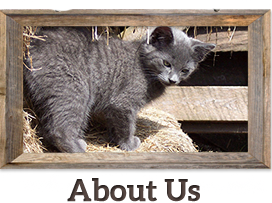Tumors in Birds: Xanthomas
What are xanthomas?
 Xanthomas are discrete masses or diffuse, thickened areas of skin that are a yellowish-orange color with a dimpled surface. They are accumulations of fat and cholesterol that are primarily seen in cockatiels and parakeets (budgies), and especially in female birds.
Xanthomas are discrete masses or diffuse, thickened areas of skin that are a yellowish-orange color with a dimpled surface. They are accumulations of fat and cholesterol that are primarily seen in cockatiels and parakeets (budgies), and especially in female birds.
Xanthomas most commonly occur on the wing tips, breast region, and the ventral abdomen (between the legs and around the vent). They are often locally invasive and destructive; the tissue is weak or crumbly (friable) and can be easily damaged or ulcerated, especially as it grows larger. Birds will sometimes cause self-trauma by picking at them.
The specific cause of xanthomas is currently unknown. Genetic predispositions, high fat or high cholesterol diets, and trauma are thought to contribute to their formation.
Are there any treatments for xanthomas?
It has been reported that some birds respond to nutritional therapy. Often these birds are on high-fat, all-seed diets. Weaning slowly onto a balanced diet (pellets and vegetables, with limited fruit as treats), plus supplementation with vitamin A or vitamin A precursors, may be successful.
If the xanthoma continues to enlarge, or becomes ulcerated, bleeding, infected, or painful, surgical removal is required. If the mass is left untreated, it may become large enough to impair the bird's movements. In addition, the bird becomes susceptible to sudden bleeding episodes and may bleed to death.
The goal of surgery is to completely remove the xanthoma and any surrounding fatty, necrotic, or ulcerated tissue. If all diseased tissue is removed surgically, it is less likely the tumor will recur. Sometimes the tissue spreads so far into the surrounding skin that complete surgical excision may be impossible. In these cases, the mass will be de-bulked (cut down in size) as much as possible.
In some cases, the xanthoma is so large that if it were completely removed, there would not be enough healthy skin left to close the surgical wound. Suturing incompletely removed xanthomatous tissue is complicated by the fact that the tissue is weak and may not hold the sutures well.
Often, the only way to remove a xanthoma located on the tip of the wing is by surgical amputation of the end of the wing. Large xanthomas on the abdomen are extremely difficult to remove surgically, as there is usually not enough healthy skin to close the surgical site. Yearly intervention and a yearly health examination are critical to assess your bird’s health and to look for any swellings or abnormal skin conditions. Consult a veterinarian familiar with birds for further guidance.
© Copyright 2025 LifeLearn Inc. Used and/or modified with permission under license. This content written by LifeLearn Animal Health (LifeLearn Inc.) is licensed to this practice for the personal use of our clients. Any copying, printing or further distribution is prohibited without the express written consent of LifeLearn. This content does not contain all available information for any referenced medications and has not been reviewed by the FDA Center for Veterinary Medicine, or Health Canada Veterinary Drugs Directorate. This content may help answer commonly asked questions, but is not a substitute for medical advice, or a proper consultation and/or clinical examination of your pet by a veterinarian. Please contact your veterinarian if you have any questions or concerns about your pet’s health. Last updated on Aug 29, 2025.


